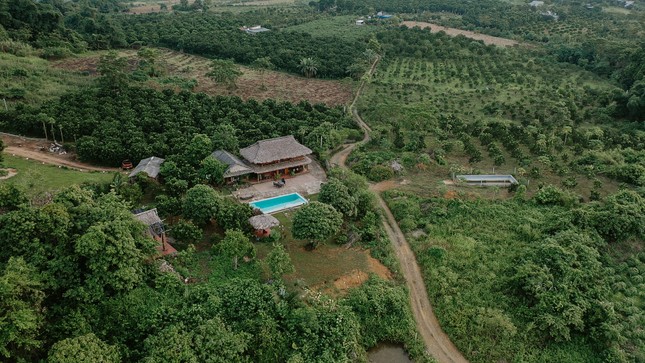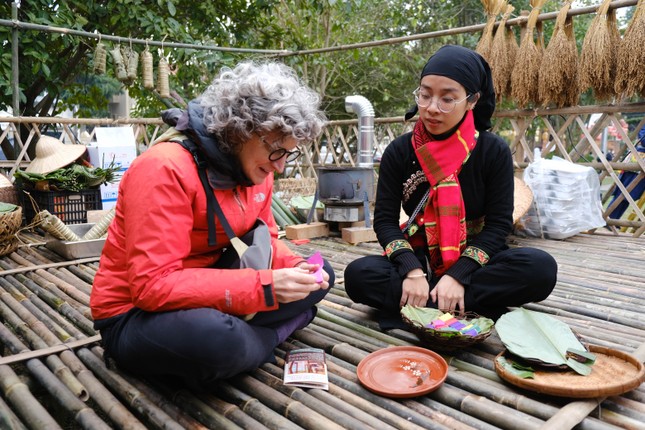The Challenges Facing the Tourism Industry
The global tourism industry, including Vietnam, has become paralyzed due to the pandemic. Looking back at the golden age before COVID-19 (2015-2019), international visitors to Vietnam increased by 2.3 times, from 7.9 million to 18 million; domestic visitors increased from 57 million to 85 million. In 2019, the tourism industry contributed over 9.2% to the country’s gross domestic product (GDP). Vietnam’s tourism competitiveness has improved by 12 places, from 75th out of 141 countries in 2015 to 63rd out of 140 economies in 2019.

COVID-19 has put the Vietnamese tourism industry on hold during a period of remarkable growth.
While on track to become a leading economic sector, the enormous impact of the COVID-19 pandemic caused the tourism industry to hit rock bottom, ending an average annual growth rate of nearly 23% in international visitor numbers from 2015 to 2019.
As evidence, the total revenue from tourism in 2019 was 755 trillion VND, but in 2020, it decreased to only 312 trillion VND, a 58.7% decrease compared to 2019. In 2021, it continued to decline to 180 trillion VND, a 42.3% decrease compared to 2020. 95% of international travel agencies have stopped operating. Many hotels and restaurants in Vietnam have had to close, with room occupancy rates reaching only 10-15% at certain times. This has resulted in millions of workers being laid off.
Reflecting on those difficult times, a representative from the Hoa Mai Tourist company said, “About 7-8 years ago, when Vietnam’s tourism industry was thriving and becoming an attractive destination for domestic and international tourists. However, the pandemic hit, many countries had to close their borders, implement social distancing measures, and tourism workers like us were left in the lurch. In 2020, the company’s revenue was only 20 million VND. It was extremely painful and heartbreaking.”
It is not only tourism businesses that have been affected, but also businesses in tourist cities. Speaking to PV Tiền Phong, Mr. N.V.H., owner of a restaurant in Da Nang city, shared that before the pandemic, his restaurant welcomed thousands of visitors per day, especially during holidays such as Tet (Lunar New Year).
“At that time, especially during the Lunar New Year, the number of customers coming to the restaurant increased 3-4 times compared to normal days because it was a time when visitors went on pilgrimages. However, since COVID-19 arrived, all eateries had to close for nearly a year. I have never seen the tourist city of Da Nang suffer for such a long time. When the lockdown was lifted and businesses reopened, inflation surged, and domestic tourists always try to save money when traveling, making the situation increasingly difficult,” Mr. N.V.H. confided.

Many accommodation establishments were deserted during the pandemic. Photo: Tran An.
Looking towards the Lunar New Year in 2024, the Vietnamese tourism industry still faces many challenges. Mr. Bui Thanh Tu, representative of Best Price travel agency, believes that operating costs have returned to pre-pandemic levels, but revenue has not recovered, resulting in thin profits.
Some experts express concern about changes in consumer behavior, which they consider to be the most important factor leading to difficulties for the tourism industry. Previously, domestic tourists would typically book Lunar New Year tours more than 2 months in advance, but now they book just over 1 month in advance. This has caused some businesses to struggle as they had sold tickets in advance and had to offer promotional programs to reduce their revenue.
Always Seeing Light at the End of the Tunnel
In difficult times, those working in Vietnam’s tourism industry are always prepared to adapt, and this is helping the tourism economy recover. After COVID-19, domestic tourism reached a new high in 2022, with 101.3 million tourists, an increase of 168.3% compared to the set target. In 2023, domestic tourists are projected to continue growing to 108 million.
The number of Vietnamese people traveling abroad is expected to reach 10 million in 2023. The international market to Vietnam is expected to pick up speed, with 12.6 million international tourists in 2023.

International tourists are showing more interest in destinations in Vietnam. Photo: Tran An.
A report from the General Statistics Office shows that in 2023, revenue from accommodation and food services is estimated to reach over 670 trillion VND, accounting for 10.8% of the total and increasing by 14.7% compared to the previous year. Revenue from travel agencies is estimated to reach 37.8 trillion VND, an increase of 52.5% compared to the previous year.
Research also shows that after being isolated at home for too long due to the pandemic, people value travel experiences even more. However, due to the economic difficulties, people are more cautious with their spending. Tourists prefer to participate in new and worthwhile trips that are worth every penny. Faced with the opportunity to restore revenue to its initial trajectory, travel companies have been refreshing their products.
“Instead of 6-day-5-night tours, we now offer longer tours to attractive destinations such as Japan, South Korea, Taiwan, and Europe. At the same time, we always strive to bring the latest products. For example, starting from Tet, travel agencies will start accepting bookings for the 2022 April 30 – May 1 holiday,” said Mr. Bui Thanh Tu from BestPrice Travel Compan.

Vietnamese travelers are ready to join unique journeys. Photo: Le Viet Vinh.
Many tourism experts believe that the fact that people are flocking to destinations with snow this winter proves that tourists are willing to spend money on unique trips. It is important for tourism businesses, destination management organizations, and local governments to professionalize all operations to provide the best services and create a sustainable market.
Investing in digital transformation has become particularly important. Currently, many travel agencies in the Hanoi Old Quarter mainly transact directly with customers and have seen a decrease in revenue as they can only offer short-term tours. In the case of longer tours, tourists are interested in online ticketing channels, where they can apply promotional codes to save a significant amount of money.

International tourists are only interested in short tours with low costs when booking directly. Photo: Tran An.
In addition, travel agencies share the view that in order to stabilize operations, stimulate customers, and contribute to the development of the tourism industry, authorities should provide necessary support. Especially, to secure cash flow, many airlines require travel agencies to make a deposit to purchase air tickets for the whole year instead of quarterly as before.
As a result, travel agencies have to invest large amounts of capital, estimated at around 10 billion VND for each international flight segment per year. Many representatives from travel companies share that obtaining loans from banks for tourism businesses is usually more difficult than for manufacturing companies because there are not many assets for collateral. Therefore, representatives of travel companies hope that in the near future, Vietnam will have reasonable loan packages for this specific type of business.












